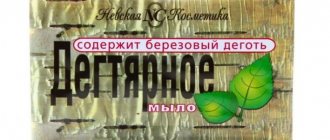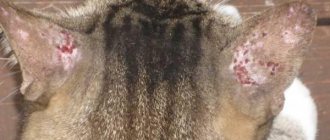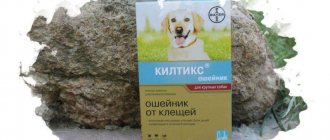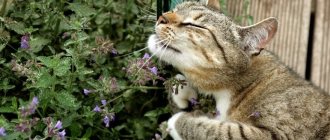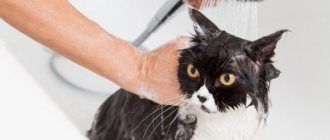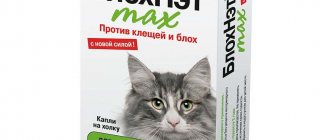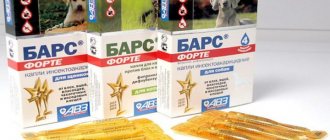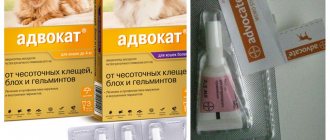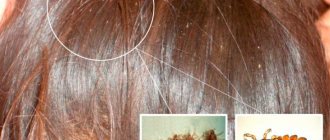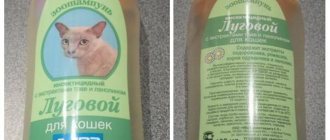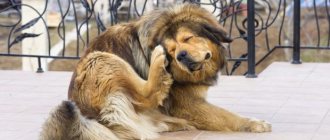There are many ways to get rid of fleas, but when it comes to living quarters or treating pets, the number of available methods is significantly reduced. Chemical insecticides, turpentine, kerosene, vinegar can pose a health hazard and therefore their use is not recommended.
An excellent alternative would be essential oils, which will not only help eliminate parasites, but also make the atmosphere at home more comfortable.
The principle of action of essential oils against fleas
Essential oils are a natural repellent that helps get rid of fleas. Blood-sucking insects do not tolerate strong odors, so they try to get away from their source. The method of getting rid of them using aromatic oils is based on this feature of parasites.
Important! The main thing to understand is that oils do not kill fleas and do not destroy larvae or eggs. The effect is that bloodsuckers leave the room in which an unpleasant aroma hovers.
Flea
Does it help?
The effectiveness of folk methods to get rid of parasites is sometimes called into question. Not everyone is sure whether tansy helps against fleas. Entomologists emphasize that flea tansy is an extremely effective repellent. It effectively repels all blood-sucking insects, but does not have insecticidal capabilities. By inhaling the aroma of tansy, fleas will not die.
If the apartment is already infested with blood-sucking parasites (there is a large population and nests), then it is almost impossible to destroy them with improvised folk remedies.
You can count on the death of fleas in contact with tansy only if the parasite is completely immersed in the plant’s decoction.
Or the medicinal solution should enter directly into the respiratory tract of the pest.
If, with the addition of decoction, infusion or tansy oil, you simply treat the surfaces, then the fleas will begin to change their location, but will not completely leave the room. This plant is effective against fleas in cats or dogs. Thanks to this remedy, their activity can be reduced. They simply will not appear in places with the strongest herbal smell.
What oils are effective against fleas?
It would take quite a long time to list which essential oils repel fleas, since the list is extensive. It has floral, herbal, pine, citrus aromas.
Eucalyptus
Fleas are almost more afraid of the aroma of eucalyptus oil than anyone else. The pungent smell of eucalyptus quickly spreads throughout the room, repelling insects. Eucalyptus oil can be used to treat floors, carpets, and furniture (including upholstered furniture). The product has strong disinfecting properties, and also helps strengthen the immune system and alleviate the symptoms of colds.
Juniper
Juniper oil is a good disinfectant. It helps not only drive away insects, but also reduce the risk of developing an infection at the site of the bite. The oil can be used not only to treat a room, but also to protect cats and dogs from fleas, since animals are quite loyal to the aroma of juniper.
Sagebrush
For fleas, you can use both wormwood oil and fresh herbs. Volatile substances irritate the nervous system of insects, forcing them to leave their homes. Considering the fact that wormwood has a rather strong, specific odor, it must be used with caution - it is best to place small containers with essential oil where there are especially many fleas or where they enter the house.
Lavender
The aroma of lavender quickly and effectively gets rid of fleas. Lavender oil has calming properties, so it can be used in the bedroom and even applied to bedding. But we must remember that the smell of lavender negatively affects hypotensive patients. It is better for them to use coniferous oils, for example, fir or cedar, which not only repel insects, but also have a positive effect on health.
Melissa
Melissa essential oil is one of the few types that can be used not only against fleas indoors, but also for treating pet hair.
Carnation
Fleas cannot stand the rich smell of cloves and try to get as far away from it as possible. But clove essential oil should be used with caution when getting rid of fleas in the room where cats live. Animals react negatively to the smell, causing them sleep disturbances and anxiety.
Other
In addition to those listed, the following oils help against fleas:
- tea tree;
- basilica;
- lemongrass;
- mint;
- rosemary;
- geraniums;
- celandine;
- anise
Coniferous aromas work well - fir, cedar, pine.
Popular questions
The use of strong-smelling herbs in the fight against indoor fleas raises many questions among owners.
The following points may be of interest:
- Using tansy decoction to treat pet fur. It is recommended to regularly add tansy decoction while bathing your pets. This will significantly reduce the risk of parasites appearing on the dog’s fur while walking in open spaces. And she won't bring them home.
- Rubbing oil into fur. If you treat an animal externally with the solution, it is usually safe, but occasionally an allergic reaction or signs of individual intolerance are observed. If tansy oil is used to rub into animal fur, irritation may also occur.
- Using a decoction to treat interior items. To effectively repel fleas, it is recommended to wash carpets and furniture with a strong, hot decoction of tansy. It is recommended to carry out this manipulation several times a week.
- Other available means. For this folk remedy you will need table or sea salt. It is recommended to apply it to the carpets in each room, rubbing lightly. This is necessary for the penetration of salt crystals into the base of the pile (the favorite location of the larvae). The salt is left for 2-3 days, and then the carpets are thoroughly vacuumed.
Traditional methods using tansy are a useful preventive measure. However, no decoctions or fresh plants have any effect on flea larvae.
If, after various manipulations using a decoction, infusion or oil of tansy, the desired result is not observed, then you cannot do without qualified help from insecticidal services.
Rules for using essential oils
Before using essential oils for fleas, the apartment must be thoroughly cleaned - vacuum, wash the floors, get rid of cobwebs, dust, wipe all surfaces with a damp cloth, wash textiles and pet bedding, clean upholstered furniture.
Thorough cleaning
The oil will help get rid of insects if you follow a few recommendations:
- the optimal proportions of the solution against parasites are 5 drops of oil per 1 liter of water;
- Before you start treating the room, you need to protect yourself from insect attacks - use a spray bottle to spray your clothes and feet with the solution;
- apply the solution to all surfaces, not forgetting hard-to-reach places - under the bed, behind cabinets, in corners, in crevices behind the baseboard;
- It is necessary to treat not only hard surfaces, but also carpets and curtains.
The oil is effective as long as its aroma is felt, after which the processing procedure must be repeated.
Causes of flea infestation
It is impossible to completely and forever protect a dog from parasites, because there are incredibly many possibilities for infection with them. Whether on the street or in the apartment, there are no safe places. Fleas can be found anywhere, even in the most unexpected places. But we can identify the main reasons for the appearance of “vampires” in animals:
- Any walks in nature or even around the city;
- Contact with other animals;
- Larvae.
In the first case, it is obvious that hungry insects are patiently waiting for victims. They have no preference in choosing where to ambush. Grass, foliage, and soil will do. They can be found on the playground, on sidewalks and on public transport. They are everywhere. And there is a simple explanation for this: an animal overpopulated with fleas throws off some of the parasites.
But the risk of having uncomfortable “guests” is even higher - communication between pets. A dog easily picks up fleas, even if it is half a meter away from an infected animal. There is also a risk when interacting with a completely domestic animal.
Larvae, like fleas themselves, can be everywhere. But they are the easiest to bring into a person’s house. On shoes or clothes along with dirt and stuck leaves.
Fleas are tenacious creatures. It is not difficult for them to move freely from one place to another in search of food. They can get into the house through open windows and doors, and even in women's handbags or grocery bags.
IMPORTANT: Fleas are often confused with lice. They are easy to distinguish: the body of lice is usually large and flat, and the legs are short. Fleas are brown in color and lice are grayish-white. The latter are less common, mainly in unkempt pets and stray dogs.
Flea classification
It is difficult for a non-specialist to distinguish one type of flea from another, because to the eye they look the same. But the flea classifier includes many families and species of these insects.
Most often, it is generally accepted to separate fleas according to their choice of prey: human, cat, rat, etc. There is also Ctenocephalidis Canis - this is the so-called dog flea. In fact, not only this species, but also many other species parasitize the dog.
The human flea feeds on the blood of both humans and their domestic animals. They are saturated with blood in 20 minutes, and then digest it for another six hours.
IMPORTANT: Subcutaneous fleas are a myth. There are many parasites that live under the skin, but fleas are not one of them. Duck mites are also mistakenly mistaken for fleas.
- The cat flea also parasitizes other animals and humans.
- A dog flea is similar to a cat flea, but lives a little less (six months to one and a half years). These insects are sources of flatworms and plague.
- More dangerous than the previous ones is the rat flea. She is a carrier of rat and mouse tapeworm.
- The black flea, unlike, for example, the dog flea, reproduces very quickly: the time from being in the larval stage to becoming an adult is barely four days.
- There are grass fleas that are mistaken for other species of fleas. Unlike the others, the grass one has wings, albeit barely noticeable. It is active from mid-spring to mid-summer, but there are exceptions. If you don't get rid of it in time, it can bother you all year round.
IMPORTANT: Grass fleas often inhabit vegetable gardens and eat plants. But this does not mean that they are harmless to humans and animals.
Another special species is the bed flea. Already from the name it is clear where it lives.
Read Treatment of allergies in a French bulldog: selection of dry food
How fleas reproduce on dogs
The peculiarity of their reproduction is that in cold weather they prefer not to mate. The ideal temperature for this is 18-25 degrees. Mating itself takes several hours, so it does not happen on the dog’s body, but somewhere in a secluded corner.
The life cycle of these bloodsuckers includes four stages:
- Egg. The female lays them little by little: only 4-8 eggs at a time. Eggs rarely remain on the pet itself; they usually fall to the floor due to their non-stickiness.
- Larva. The dog flea hatches after 8-14 days and begins to feed on the excrement of adults. She needs excrement because it contains undigested blood. Their diet also includes other waste, including rotted grass.
- Doll. After two molts, the pupa weaves a cocoon, which subsequently sticks to it. The flea remains in this stage until a victim appears nearby.
- Imago. Adult stage. Their lifespan greatly depends on the conditions in which they live. At low temperatures they live longer.
How to make the fight against fleas in the house more effective?
You can enhance the effect of using essential oils to get rid of fleas in your apartment in the following ways:
- after general cleaning, it is necessary to clean the vacuum cleaner and immediately take out the garbage, otherwise insects may spread throughout the house again;
- When starting the fight against parasites, you need to not only treat the apartment, but also wash your pets with anti-flea shampoo or put on special collars for them;
- Fleecy surfaces should be treated with special care: floor coverings, carpets and door mats, bedding and pet houses
Using mixtures of several oils, you can make pest control more effective. Popular combinations:
- mint and lavender;
- clove, lavender and tea tree;
- mint, lavender and eucalyptus.
Regular use of the aroma lamp will help to consolidate the results.
Features of application
Tansy is a poisonous plant. If the localization of fleas is associated with the presence of children, pets, or where food is prepared, then it is better to avoid this remedy. Experienced housewives recommend using tansy in the summer, when it is possible to temporarily go to the countryside. Fresh or dried plants are left at home. They will work equally well.
Some also practice using tansy in the vent. This will spread the smell, which is pungent for fleas, throughout the entire apartment faster.
However, such an aroma can cause headaches and spatial orientation problems in a person, so this method must be used very carefully.
Tansy to repel fleas is usually used together with wormwood. Or they combine blends with other plants that have a pungent odor that is unpleasant to fleas. Folk remedies are considered effective tools in the fight against blood-sucking parasites. But if there are a lot of insects, then herbs and oils alone will not cope with the problem. If the degree of infection is high, you will have to contact a specialist.
Before you start fighting fleas with folk remedies, you need to treat the hair of your pets. Otherwise, they will continue to be a source of infection in living quarters. The home should also be thoroughly cleaned using disinfectants.
Fighting itching and pain from bites
Essential oils can also be used to treat insect bites. The most popular oils are tea tree and lavender, which are used to lubricate the bite site. They reduce inflammation and relieve itching. The product can be used pure or mixed with base oils, such as olive, jojoba, and wheat germ.
On a note! First you need to make sure that there is no allergic reaction to the selected oil. For the test, a small amount is applied to the skin in the wrist or elbow area.
But it is better not to use essential oils for flea bites on cats and dogs. The cat's body may respond inadequately to such treatment, causing severe skin irritation or impaired olfactory functions. The best option is special products for animals.
Symptoms and external signs
The main symptom is the dog’s anxiety: it tends to change its position while resting, twitch, and jump up. A flea-covered dog stops loving bathing. Any entry into the water evokes an irresistible desire to get out onto land.
An obvious sign is that the animal has bitten itself, scratched itself furiously, and its eyes are filled with irritation or anger.
Other signs are visible when scratching: red spots on the skin (this is not an indicator if the dog has allergies), eggs and excrement on the fur. Wounds and areas with ulcers also indicate possible infection.
Fleas bite in their favorite places - the withers, ears and stomach. That's where you should look for them first.
Safety measures when disinfesting with aroma oils
Despite the fact that essential oils are a completely natural product, when using them against fleas in the house, you must take precautions:
- follow the dosage, dilute the oil according to the instructions;
- use a small amount of product;
- do not inhale concentrated vapors;
- Before first use, check if anyone living in the house (including pets) is allergic to the selected oil.
Attention! Aroma oils are not recommended for use in the presence of pregnant women and small children.
Ventilation
If, after treating the room, one of the household members feels unwell (dizziness, headache, nausea), it is necessary to thoroughly ventilate the room and continue to use other means.
Reviews
All this is very tedious, you need to tinker. And even neutralize the house if the dog has fleas! At first I fought with all the means I could, but they still appear from somewhere. I had to spend money on ivermectin - it is injected intramuscularly. Everything has been fine with my Gadget for several months now!
Our dog doesn't like collars. Always trying to take them off, naughty. We also tried aerosols, but then the whole apartment stank. He is allergic to pine needles, but wormwood helped. Only we didn’t just wash the floors with it, but scattered the dried stuff in the corners. No further processing is needed. Sometimes we still drip, but that's just how it is
Advantages and Disadvantages of Using Essential Oils
The use of aromatic oils has a number of positive and negative features. The advantages include:
- natural composition, lack of aggressive effects on the human body and pets;
- the ability to choose the scent to your liking (an additional plus is the pleasant smell in the apartment);
- availability, large selection and wide range of prices;
- ease of preparation of an oil-based product, no need for protective equipment (gloves, mask, respirator).
Main disadvantages:
- individual intolerance or an allergic reaction is possible in both people and animals;
- aromatic oils do not affect eggs and larvae, so the treatment will need to be repeated after a few days.
Another disadvantage of this method is that it cannot be used if there are children under 1 year of age in the house.
Types of apartment treatment
Currently, both insecticidal preparations and folk remedies are used to kill fleas in the house.
Treating an apartment for fleas using GET
The active toxic substance chlorpyrifos (5%) is harmful to parasites, but safe for humans. It is possible to get rid of insects with them even in children's or medical institutions.
- Before treatment, send your family and pets to visit.
- Move cabinets, sofas, beds and other objects away from the walls, and remove carpets. Make sure the trays of your indoor plant pots are dry. Give yourself easy access in all rooms.
- Wear protective gloves and a respirator. Remember that without them you risk getting burns to your fingers, hands and even mucous membranes, or chemical poisoning.
- Prepare the solution. To do this, dilute 50 ml of GET concentrate in 1 liter of water at room temperature and pour into a previously prepared spray bottle.
- Spray generously everything in the apartment: cracks in floor skirting boards, in the floor, walls up to one meter high. Do not store unused leftovers.
- After you have treated all the rooms, close the windows and doors in the apartment and leave it for 8-12 hours. Make sure there are no drafts.
- Upon return, vacuum or beat out the carpets, and wet clean the house using a soap and soda solution. Wash and dry all children's clothes, toys, and textiles thoroughly. It is recommended to wash clothes and linen at high temperatures and steam them. Ventilate all rooms in the apartment.
Advantages: safe composition, odorless, leaves no marks or streaks.
Disadvantages: After prolonged use, fleas become addicted.
Flea treatment with Butox
It is used both for external use on pets and for indoor treatment. The active substance deltamethrin causes paralysis in parasites and their subsequent death. You can purchase them in specialized stores or veterinary pharmacies.
- For washing dogs, cats (over 6 months): 1 ampoule of the substance per 4 liters of water. Soak a sponge in the liquid and wipe the belly, back, limbs, ears and area under the tail. Make sure that the animal does not lick itself after bathing. Repeat in a week.
- For indoor use: dosage depends on the type of surface. The apartment is processed according to the scheme described above.
Advantages: high efficiency, affordable price.
Disadvantages: strong specific smell.
Destruction of fleas with the drug EXECUTIONER
A powerful modern remedy that also has a paralytic effect on fleas. Packaging is purchased at the rate of: 1 bottle per 5 sq.m of treated area.
The solution is prepared in the ratio: 1 bottle per 0.5 liters of warm water.
The treatment process is standard: put on protective equipment, prepare liquid, spray the floor, walls (up to 1 meter above the floor), and furniture.
Leave the room closed for 8 hours.
The effect of the Executioner lasts up to 1 month. It even affects their hatched larvae.
Advantages: harmless composition, can be used in kindergartens, schools, hospitals, etc.
Disadvantages: when used privately, it ceases to work, high price due to high consumption.
Killing fleas with steam
Although chemicals are effective for baiting insects, they cannot always be used. Families with small children or without the ability to leave their home during disinfection have to look for another method. An alternative in this case is a steam generator or steamer. Once every 10 days, baseboards, carpets, upholstered furniture, etc. are processed. You should go over all fabric coverings with the device: curtains, drapes, upholstery, personal items and outerwear.
Advantages:
- The most environmentally friendly and safe way.
- Can be used on surfaces that cannot be treated with disinfectants.
- Allows you to significantly reduce the number of parasites.
- Available for use over large areas.
- The method allows the presence of people.
Flaws:
- This method is less effective; it will not destroy the entire colony, but will significantly reduce their number. Insects will partially die out.
- Steam will not be able to penetrate into a narrow gap or hard-to-reach corner.
- If the flow is close to the source of infection, you may inadvertently blow away eggs and larvae. This means that within a month the population will restore its previous numbers.
- A small percentage of moisture remains on surfaces, which has an adverse effect, for example, on wood products.
- Do not operate the steam generator near sockets, electrical appliances, household appliances, etc.
Due to the fact that furry pets cannot be steamed or boiled, they should be disinfected with specialized zoo products. Until the cat or dog is disinfected, bloodsuckers have a source of food and a favorable environment for the reproduction and storage of larvae.
Oil-based medicines
While aromatic oils can be used to treat a room against fleas, it is not always safe to use them to get rid of bloodsuckers from pets. If the product gets on the skin, it can cause irritation, the strong smell will cause discomfort to the pet, and if it tries to clean the fur and starts licking the medicine off, it can become poisoned.
Aroma oils
Special preparations containing essential oils will help protect your pet. The most popular include:
- Beaphar (spray or shampoo);
- Doctor ZOO (shampoo);
- Bars (shampoo);
- GreenFort (shampoo).
When using a new product for the first time, you must carefully monitor your pet’s condition to notice possible manifestations of allergies.
The danger of fleas for dogs and humans
In addition to discomfort, the dog has a risk of getting sick or becoming infected with something else. Fleas are especially dangerous due to the following consequences:
- Plague;
- Infestation by tapeworms and other parasites;
- Typhus;
- Ulcers, including anthrax;
- Allergy;
- Brucellosis;
- Listeriosis;
- Anemia;
- Fungal infections;
- Encephalitis;
- Salmonellosis.
Fleas will not spread to humans, but if they bite, they will bite. Accordingly, the owners have the same risks.
How to prepare and store wormwood
To have a sufficient supply of healing herbs, it is better to prepare them in large quantities in advance. When dried and crushed, wormwood does not take up much space, but will help you if necessary. More often, people collect wormwood and other medicinal herbs in the summer season. Common wormwood grows in sunny open meadows, which are used as pastures for livestock. It is easy to distinguish wormwood from other plants. It has a light green (slightly bluish leaf color), rich aroma and a peculiar shape. The plant can reach a height of 1.5-2 meters. In late summer, wormwood blooms with small yellow flowers.
Procedure for collecting and preparing wormwood:
- When collecting grass, it should be grouped into small bunches and tied with thread at the base of the stems.
- The resulting bunches should be hung in a shaded and well-ventilated place to dry.
- After drying, the plant can be moved to another place for storage. The temperature in it should not exceed 24 degrees, and it should also be protected from direct sunlight and high humidity.
Storing wormwood in dry whole or crushed form is allowed for 2-3 years. It is advisable not to store wormwood in the form of a decoction for a long time, but in the form of a tincture it can be stored for an unlimited time.
Lavender
Lavender contains essential oil rich in coumarins and tannins. Its smell does not disappear for a long time and has repellent properties.
Pour a tablespoon of chopped herbs into 250 ml of boiling water, strain after half an hour. Spray the rooms around the perimeter with an odorous liquid, not forgetting to treat carpets and mattresses.
To drive out fleas and freshen the air in your apartment, add 2-3 drops of lavender essential oil to an aromatherapy lamp or tie the stems into bunches and hang them on the walls.
How to handle pets?
A decoction of wormwood is best suited for treating animal fur.
The product should be at room temperature. The algorithm for processing pet fur is as follows:
- Apply the decoction drop by drop, you can spray the animal's fur, then rub the composition using your palms.
- If the pet's undercoat is very long or thick, then during the process it is necessary to spread it to the sides so that the product comes into contact with the animal's skin. There is no need to be afraid of the harmful effects of the plant: the decoction will not burn or cause irritation to the skin, and the bitter taste of the herb will not allow your pet to eat it.
- If the treatment is not carried out for preventive purposes, it is better to carry out all manipulations in the fresh air, since fleas will soon begin to immigrate.
Additionally, you can place fresh twigs or bunches of dried wormwood near the animal’s habitat and treat pet care items (brush, rug, toys, etc.).
